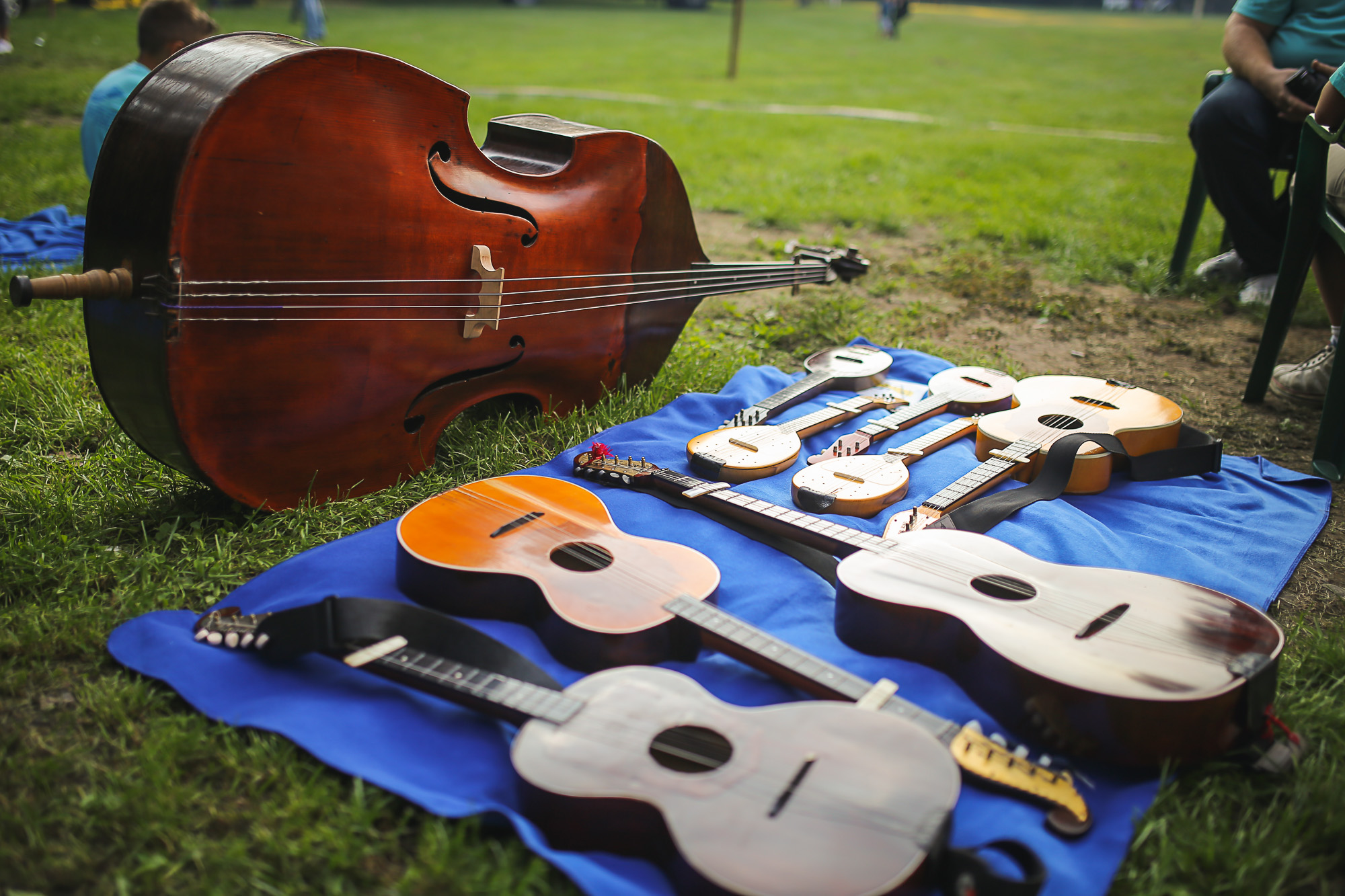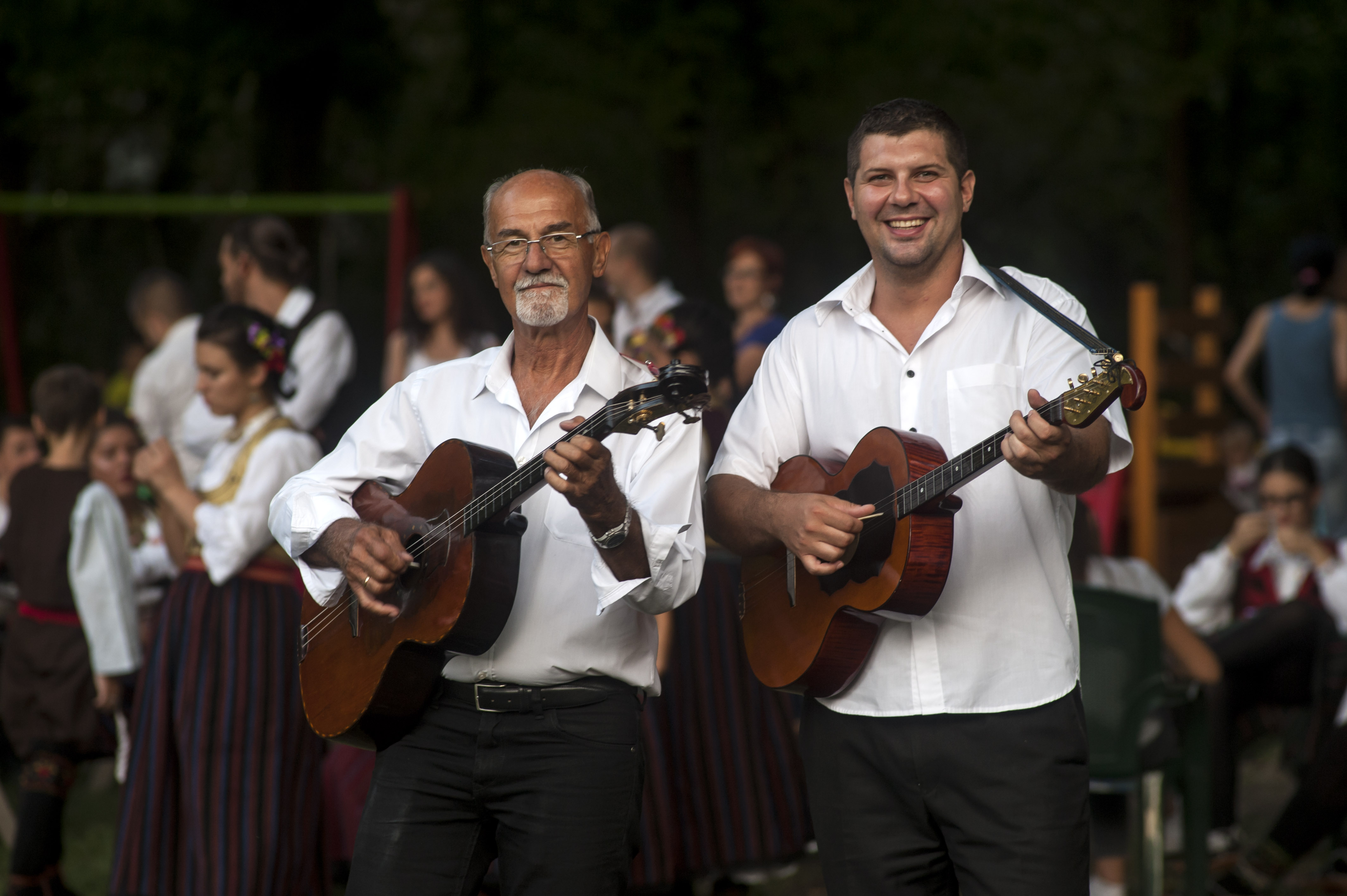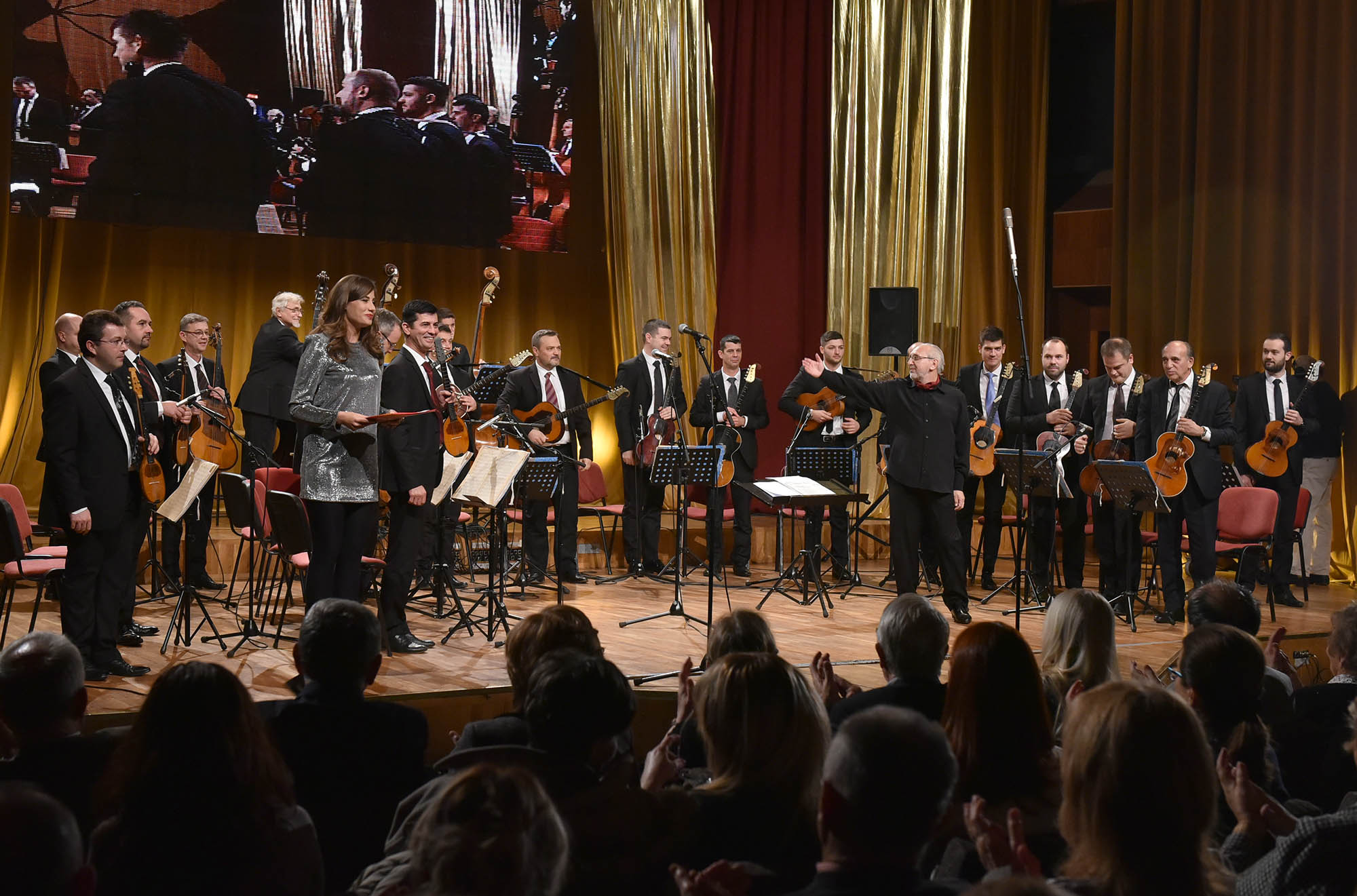Tamburitza, which is used to accompany many songs, both sad and happy, mocking and cheerful, songs that celebrate life, is an inseparable part of Vojvodina’s culture.

But how did the tamburitza make its way to Vojvodina? Tamburitza is a string instrument originating from Mesopotamia (stone carvings date back to some 3,000 years ago), with four to six wires, brought by the Turkish conquests to the Balkans, first to Macedonia and Bosnia, and later through migration to Central Europe. The present form dates back to the beginning of the 20th century, when a “small Viennese guitar” was remodelled in Hungary and a composite tambouritza with head, neck and corpus was made, first from maple, linden and pear tree, and later from fine pinewood pieces which gave it better resonance and sound. Trio is the smallest tamburitza band, and when the number of tamburitza players exceeds 15, they form a tamburitza orchestra. Tamburitza had its golden age in the late 19th and early 20th century, especially in Pest. After the World War I, tambouritza sound became somewhat lower and now we have two main tuning styles – Sremski (used in Vojvodina) and Farkas Tuning (used in Western Croatia).

The most famous tamburitza player as of recent was Janika Balasz (1925-1988), a descendant of a musical Roma family, who delighted audiences with his skills first in Bečej, Subotica and Titograd (in the 1950s), until finally settling down in Novi Sad. He accompanied the famous singer and songwriter Zvonko Bogdan and many other stars, and had unbelievable 36 appearances at the Olympia in Paris. After his death, a monument was built in his honour depicting him holding a tamburitza.

The most beautiful song to sing on the tamburitza is Bećarac (note: a type of humorous folk song), which is typically sang in Vojvodina and Slavonija. Bećarac is a two-verse folk song, with a lively 24-beat-rhythm, which, as musicologists claim, originated somewhere in Slavonija’s taverns, several hundred years ago, but became popular in other parts of the Pannonian Plain, especially in Vojvodina, too. Bećarac is sang in such a way that a singer “introduces” everybody to the first verse, and then everybody, or all available vocals, sing it together. Yes, verses have to rhyme with the previous syllables.
Bećarac is a feel-good song sang by happy people who want to show everybody their joie de vivre. It is often humorous and can be provoking, satirical and sometimes even lascivious, but it has to carry a convincing enough message that makes the audiences agree with it. Vojvodina’s population, especially Serbs, see Bećarac as „their song“ although the population of Srem County has a bigger sense of entitlement to Bećarac than that from Bačka or Banat counties, and maybe rightly so. Bećarac is best played on the tamburitza, although it sounds good when played on the accordion too. If it is played on bagpipes, it sounds a bit dull, although, back in the day, it was played solely on bagpipes. It is sang everywhere with the same melody, except in Srem where it is a bit protracted and in Bačka somewhat livelier. There are „female“ and „male“ versions of Bećarac.
Zvonko Bogdan is the most renowned singer who sings accompanied by the tamburitza. This bard of „the tamburitza evergreen“ was born in Sombor, and the first song that he composed and sang was in the early 1970, and it was called „Hej, salaši, na Severu Bačke“. The song was very personal for him because, in it, Bogdan remembers his grandfather’s farm where he spent his childhood. Most of his songs are closely tied to the Bunjevac tradition which he originates from. While singing, Bogdan is known for having a cheeky smile, thus showing that his entire musical being enjoys singing. He even performed twice on EXIT’s Fusion Stage – in 2004 and 2017. His performances are so authentic that young fans treat him as a rock star.
But let’s go back to the tamburitza! Most of the famous tamburitza players originated from the village of Deronje in Western Bačka. “The Golden Tamburitza” festival has been held in December, in Novi Sad, for three decades now. A new Vojvodininian song is chosen at the Festival every year, composed and sang in the folk style.
All in all, the tamburitza and tamburitza players, Bećarac and the folk songs sang by Zvonko Bogdan, the Srem people and Bunjevci are something that could definitely be said to be the soul and heart of Vojvodina and its culture.